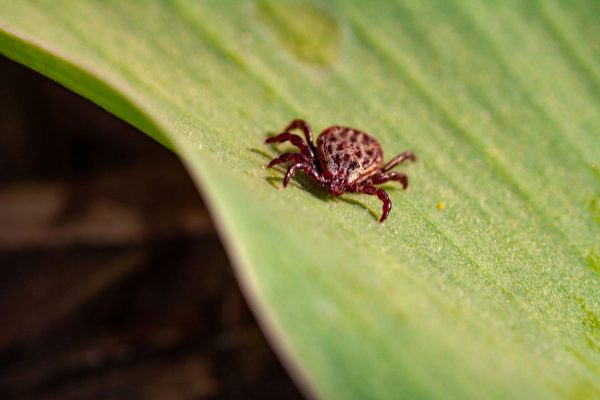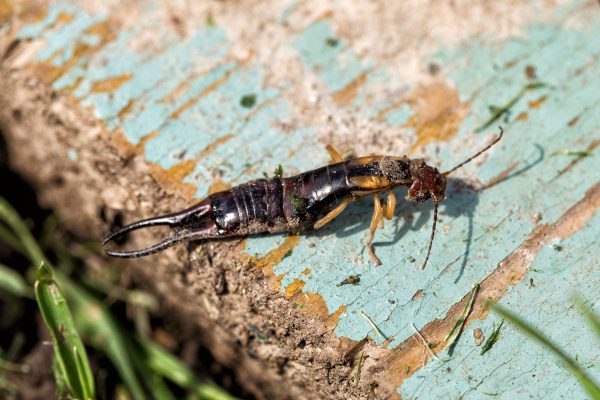Seeing one bald-faced hornet can mean that the insect’s nest is nearby. So how can you find a bald-faced hornet nest? We researched this concern for your convenience and here’s what we found.
Look for large hives that are roughly the size of basketballs, hanging in trees or overhangs. If you see these bald-faced hornet nests, don't go near them for the insects can be highly aggressive.
Perhaps you’re also wondering why you should fear the bald-faced hornet. Continue reading as we tackle the different reasons to stay away and get rid of bald-faced hornet nests in your area. We’ll also talk about how to find these insects’ nests in greater detail.

How Do You Find A Bald-Faced Hornet Nest?
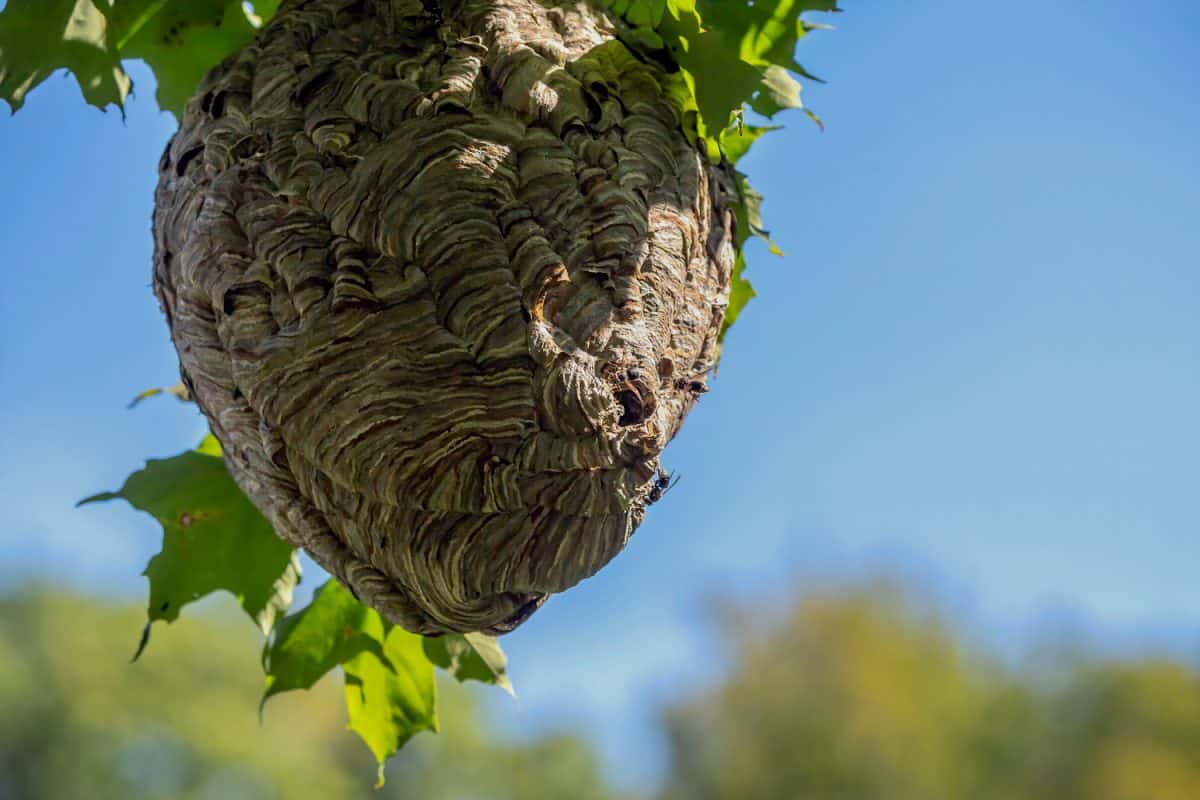
Bald-faced hornets usually build their nests in trees or overhangs. These breeding grounds can also grow as large as basketballs. Although, it typically requires the colony several months for their nests to expand to that size.
It’s also more common to see bald-faced hornet nests in the summer than in the winter. Females of these hives often leave their dens in the cold season to hibernate. The males and other hornets that remain in the old nest perish, leaving the hive to wither.
How Far Do Bald-Faced Hornets Travel From Their Nest?
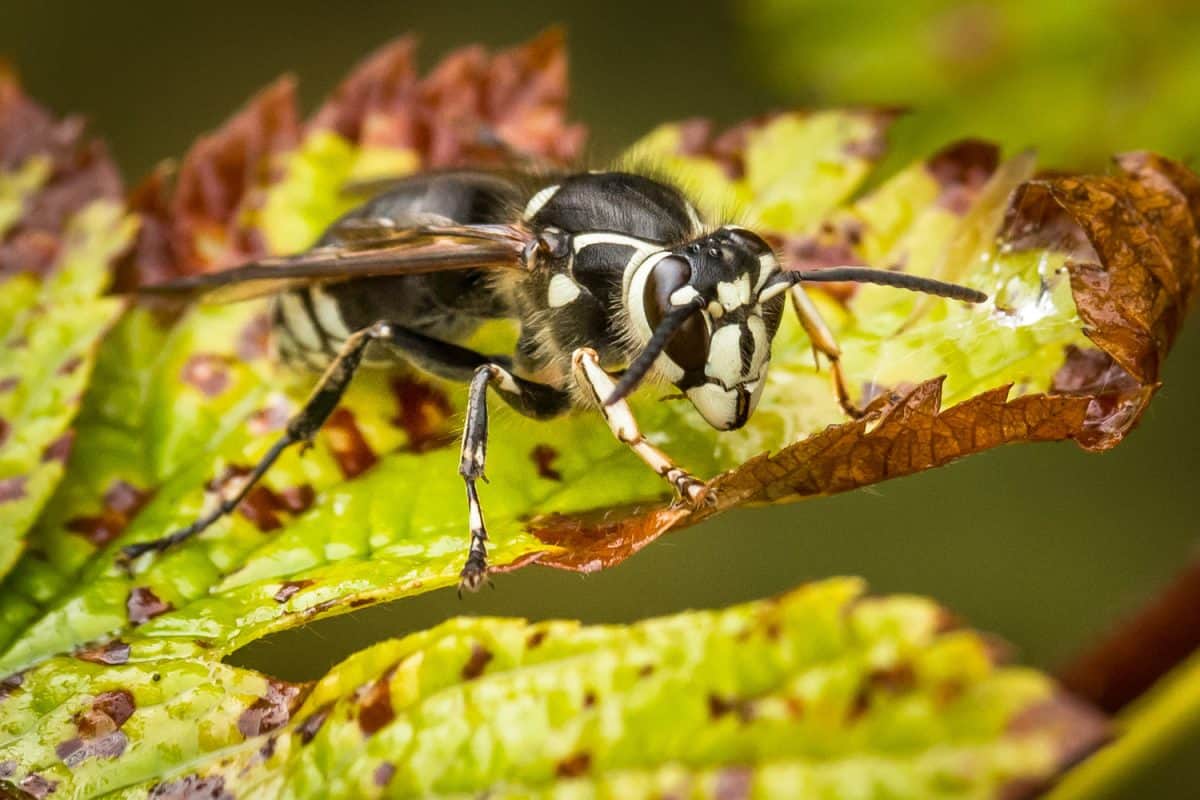
Generally, bald-faced hornets are quite protective of their hives. So, these flying insects will only usually become aggressive if an invader steps within about three feet of their nests. Individuals who see bald-faced hornet colonies should stay away as far as possible from that nesting area.
Should You Get Rid Of Bald-Faced Hornets?
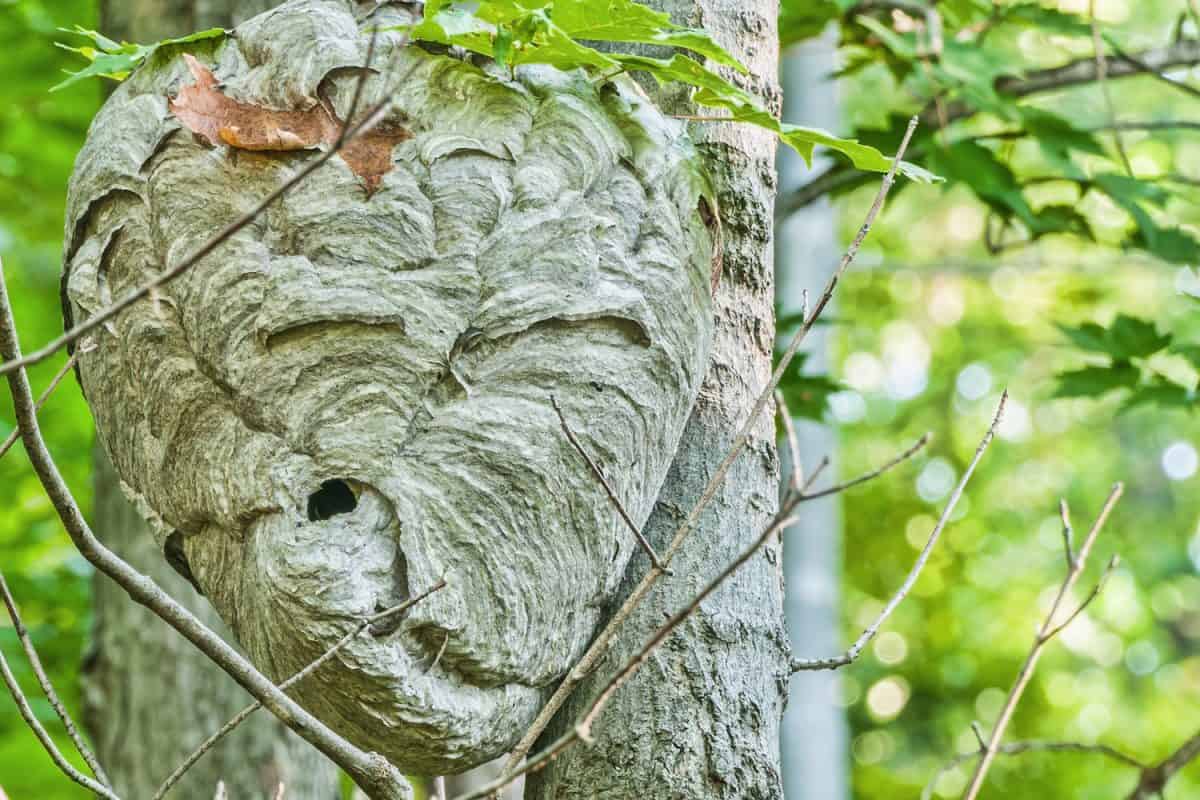
You may not need to eliminate bald-faced hornet nests if they’re reasonably far from living areas. However, if one is near your home, it might be ideal to contact professional exterminators with expertise in dealing with these insects.
If you don’t act fast, the hornets can induce fear and harm to their surroundings. Some of the reasons why you take immediate action to get rid of bald-faced hornets are:
Home To Hundreds
One fully-grown bald-faced hornet nest can be home to about 700 hundred of these flying insects. As mentioned previously, these bugs will attack relatively anything that moves that goes near their hives. These hornets aren’t typically picky with their enemies and will give chase if their prey decides to run.
Multiple Stings
Like the typical yellow jacket hornet, the bald-faced hornet doesn’t die when it stings, unlike honeybees. Its stinger is also quite painful, which can result in redness and irritation. Plus, one bald-faced hornet can sting multiple times, injecting fear into many people as soon as they see one of these insects flying in the vicinity.
Good Memory
Bald-faced hornets have reasonably good memories, despite their brain functions being significantly fewer than those of humans.
However, if invaders or intruders manage to enter these hornets' nests and escape, the bugs will often remember certain features of their prey. That way, if that trespasser decides to return to the nesting grounds, the hornets might attack faster and with more ferocity than before.
Bees Aren’t Threats
One bald-faced hornet often towers over a standard honeybee with the former insect being about five times larger than the latter. With that size, a single bald-faced hornet might be able to kill about 40 honeybees. Plus, these hornets can be quite quick, allowing them to kill that number of honeybees in approximately one minute.
How Do You Get Rid Of Bald-Faced Hornet?
Warning: Don’t go anywhere near a bald-faced hornet nest without the proper gear or expertise. Blindly entering the hive’s vicinity may result in serious injuries.
If you don't want to risk getting hurt by these flying insects, you need to prepare your body and mind before entering the fray. Otherwise, request the help of specialized exterminators from the beginning.
Still, here’s a quick look at how to get rid of bald-faced hornets in your area if you find it interesting to learn about this procedure:
What You’ll Need
- Protective bee suit
- Industrial trash bags
- Branch cutters
Step-by-Step Guide
- Wear a protective bee suit and walk to the hornet’s nest slowly.
- Place the hive in an industrial-strength garbage bag.
- Cut the branch with the hive. Make sure not to bump into the nest to avoid alerting a horde.
- Dispose or relocate the bald-faced hornet nest properly.
Check out this beekeeping suit on Amazon.
You can also watch the video below to see the steps mentioned above in action, along with other interesting details about bald-faced hornets:
What Attracts Bald-Faced Hornets?
Bald-faced hornets usually like reasonably hot climates, which might be one of the reasons why they would typically build their nests in the southeastern areas of the United States. These flying bugs also like to develop their hives near food sources, which are generally:
- Meat
- Soft-bodied insects
- Nectar and pollen
What Happens If You Get Stung By A Bald-Faced Hornet?
The stingers carried by bald-faced hornets have venom inside of them that can cause itching and swelling on the skin. Each jab is also quite painful, and these symptoms usually last for 24 hours before dissipating.
Take note that these effects may increase in intensity with each successful attempt of venom injection into the body.
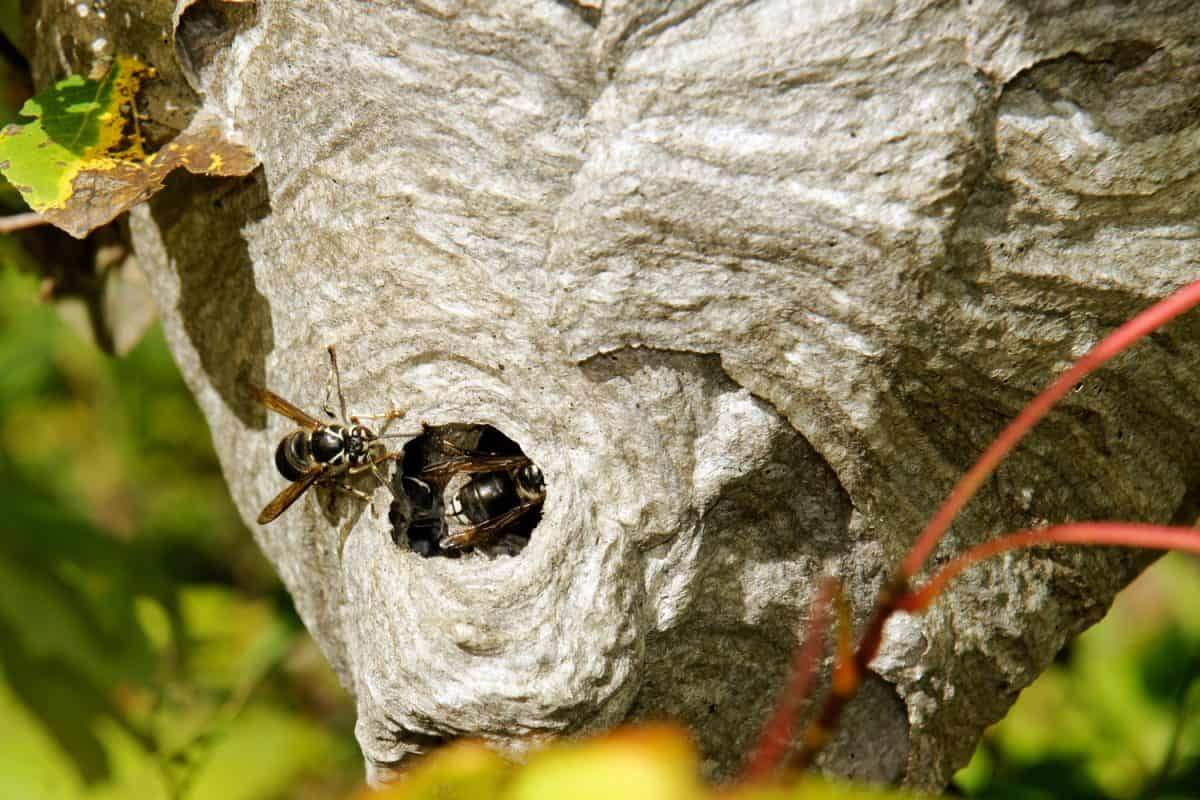
The aggressive nature of bald-faced hornets may require property owners to hire exterminators that charge between $400 and $800 to remove these insects’ nests. These costs may include the equipment and labor required for the operation, particularly in some instances when the hornet's nest is hanging from a branch of a tall tree.
Does The Queen Bald-Faced Hornet Build The Nest?
A bald-faced hornet nest starts with a single queen. The queen hornet will begin the process of developing the colony after she wakes up from hibernation. Then, she collects debris from the surroundings, which may include fiber and wood.
The queen will then chew these materials to create a paper-like substance, which will become the foundation of the hive. Once the nest reaches a suitable size, she’ll begin laying eggs. The eggs will hatch over time, allowing numerous bald-faced hornets to take over roles for the colony.
This process should take about two months before it reaches its full size. It might be ideal to get rid of the hive before it reaches the approximate size of a basketball. That way, you might not have to deal with a significant number of bald-faced hornets on your property.
Where Do Bald-Faced Hornets Go When Their Nest Is Destroyed?

Like wasps, bald-faced hornets will become dormant when their colonies disappear. Drones, scouts, and other worker hornets will remain in the vicinity until their lifespans burn out. On the other hand, the queens from the nest will search for new locations for new colonies. Once found, these new queens will hibernate until the opportunity appears to develop a new hive.
Final Words
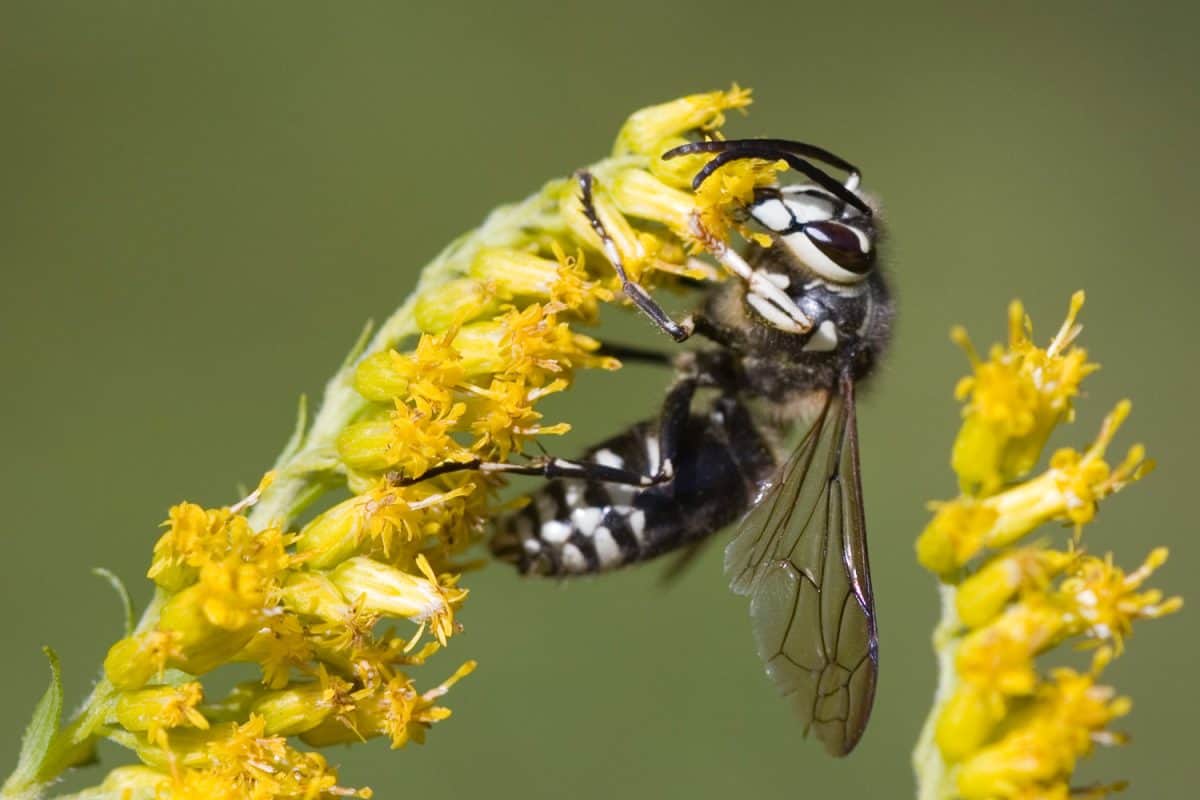
You'll typically find bald-faced hornet nests in places with hot climates. The hives usually hang from tree branches, which you can see from afar if it’s not behind a thick covering of leaves. If you see one of these nesting areas, don’t go near it or engage with it without the appropriate gear or knowledge to tackle these insects.


